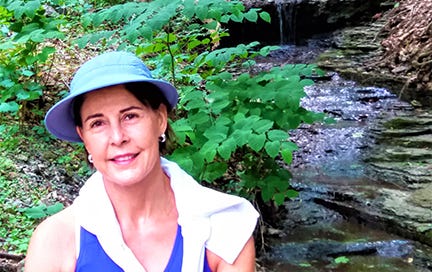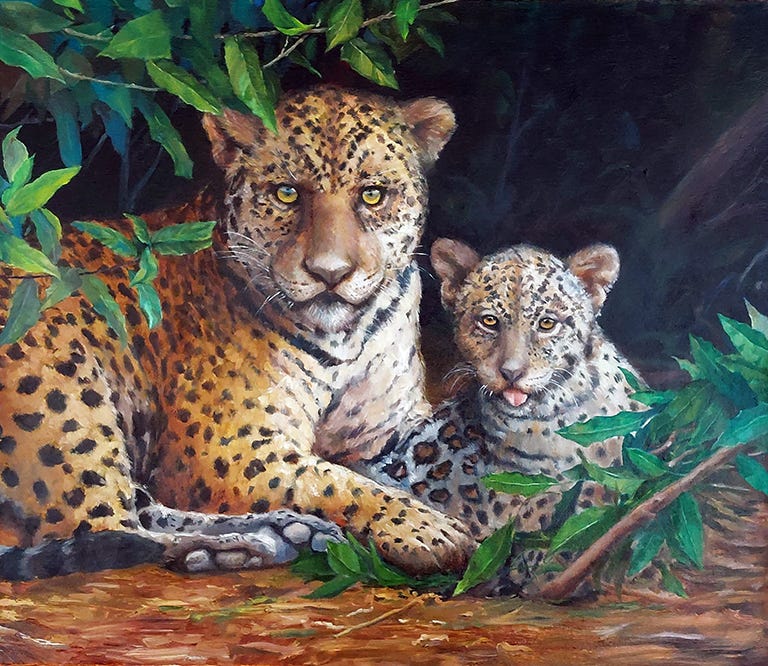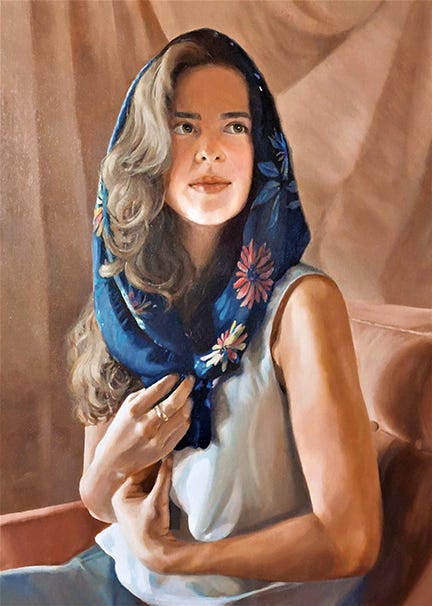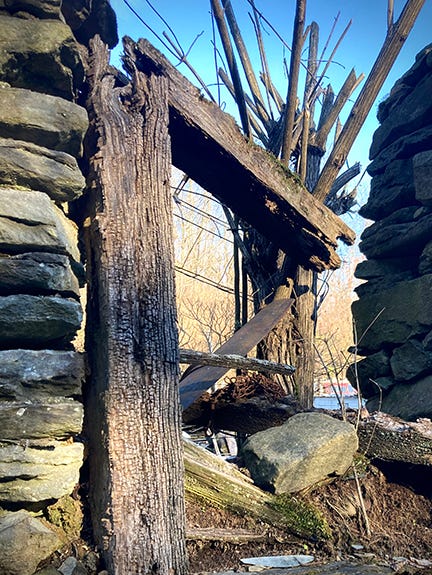Featured guest Regina Macedo brings to light several qualities I’ve noticed in many people involved with science, art, and writing: a tendency to be curious, observant, and to ask a lot of questions. I would add to that an openness to new experiences—including, but not limited to, the joy of being a student again (and for some of us, again, and again!).
I was introduced to Regina by my father-in-law, Gary Schnell, an ornithologist and long-time (now retired) biology professor at the University of Oklahoma. He has described Regina as fearless in her work, and in her willingness to take on new challenges. She needed to be, given her tree-top work with Guira Cuckoos (a type of bird that nests communally—almost unheard of in the bird world!) and other birds in Brazil.
In addition to Regina’s dedication to both biology and art, she has been a role model and a mentor for students around the world. I’m delighted to share her work here!
Interview: Dr. Regina Macedo
What sort of work do you do?
I obtained a Ph.D. in Zoology from the University of Oklahoma. Currently, I’m a professor at the University of Brasília, where I have taught undergraduate and graduate students for the last 30 years. I will be retired from this position by the end of 2023. So, I’m answering this question in what is a new way for me, and one that I have to get used to saying: I’m an artist! (It still sounds strange to my ears…). I started seriously transitioning from science, teaching, and research into the artistic world a few years ago, though I’ve always maintained a studio and have painted through my adult life. But it wasn’t until about five years ago that I started painting with a view toward commercializing my work.
Which aspect of your work has the most meaning for you?
Currently, my working life clearly consists mostly of painting, while my focus on university academic activities has dwindled. I paint for various reasons, and some of these motivations are not very clear to me. From a very early age I used drawing, and later painting, to escape the tediousness of daily life and routines. Art provides me with a mental space where I can be creative and free from stress and other people’s demands.
How are science, art, and writing part of your work, and how is the interaction between these areas important to you?
Science and art share a unique aspect that appeals greatly to me, which is that of questioning some facet of the observed world. In science, the questioning is done through the generation of hypotheses and subsequent studies to test these hypotheses. In my painting, I question how best to transmit to an audience some specific message that is important to me—which subjects to use, and how to best portray that subject.
Is there a particular scientific or environmental problem that feels important to you? What do you do about that?
In the last years that I conducted ecological research, many of my projects involved the impact of habitat fragmentation as well as acoustic pollution upon bird species. Some, but not all of my paintings, reflect my concern with the natural world. Many of my paintings are inspired by nature—beautiful landscapes and animals, primarily birds. And one series of paintings executed in the last five years was based on the native Indian populations in Brazil, which have been declining greatly.
How does your identity affect your work?
My identity as a researcher and university professor for the last 30 years has profoundly affected the way I’m currently working in the arts. Having watched how students absorb information, and how their attitude towards learning new things affects their speed in becoming knowledgeable has shown me how best to grow in my new artistic endeavor. In the past three years I’ve reached out to the best artists that I have access to in order to learn new techniques. This “inverted hierarchy” is a lesson in humbleness, because for so many years I’ve been the one to provide instruction and knowledge. So becoming a student again has been both liberating as well as sometimes flustering.
What influences and inspires you?
Good art and serious artists inspire me. I’m not keen on the type of art that is faster and easier to produce than coming up with a fancy or popular title for that same piece of art. In other words, art that lacks the basic scaffold of training that is necessary for the production of work that will span decades and continue to generate wonder and admiration. I have to say that my greatest sources of inspiration and influence were my parents. They were my personal examples of resilience, discipline and hard work, and they also supported my life choices, both in academia as well as in my painting activities.
Do you have a formative experience from growing up that you feel was your 'spark' to lead to you where you are now?
I often think back to my high school counselor here in Brazil. When I was about sixteen years old, I started thinking about what I’d like to do with my life in terms of work. I was a bit lost, since an aptitude test I’d taken indicated that I’d not be a good “boss,” nor would I be a good “employee”—supposedly I was not be the type of person that would accept orders well nor would I be good at telling people what to do. This was enormously troublesome to me at that age as I couldn’t think of activities outside this typical tiered job context. This counselor sat me down and had me write a long and detailed account of what I imagined a perfect day in my life would be like in 10 years’ time: where I would be living, what time I’d be waking up, what sort of activity I’d be engaged in, etc. This simple exercise was enough for me to understand that there would be plenty of opportunities for me to develop my talents without having to choose between being the boss or being bossed by someone!
If you could have a day to hang out with anyone in history, who would you choose, why, and what would you do together?
If it were possible, I’d hang out for a day with (and take a painting class from) William-Adolphe Bouguereau, the French academic painter of the 1800s. His realistic style of painting and his fantastic knowledge and portrayal of the human form and face are inspirational. I’m sure I’d have a thing or two to learn from him!
Thank you so much, Regina!
If you’d like to learn more about Regina and her work, please visit her website and follow her on Instagram. You can also read more about her in this article, and in this announcement from the American Ornithological Society.
Branching Out
Rooted (Stuff I like, maybe slightly off topic):
New books on my shelf: Rooted: Life at the Crossroads of Science, Nature, and Spirit, by Lyanda Lynn Haupt; Embrace Fearlessly the Burning World, by Barry Lopez; Around the World in 80 Trees, by Jonathan Drori; and The Creative Act, by Rick Rubin. I’m excited to camp out next our wood stove (hopefully with our cat nearby!) and read these soon.
I’d be happy to hear about your favorite science/art/writing books in the comments below!
Rounded (Preview of coming attractions):
I will be teaching two classes at Hawk Mountain Sanctuary (in person) as part of their 2024 Winter Artisan Series! On February 3rd, I’ll offer Writing the Sanctuary, and on March 3rd, Art of Trees. To sign up, and to learn more about these classes and the rest of the series, visit here!
Reaching (A question for you!):
How does your scientific, art, and/or writing practice change during the winter months?












Lisa, I really like your interview style. I just finished reading “How to Know a Person”, by David Brooks (which I highly recommend) and your interview fit nicely with his approach to getting to know someone in a truly meaningful fashion.